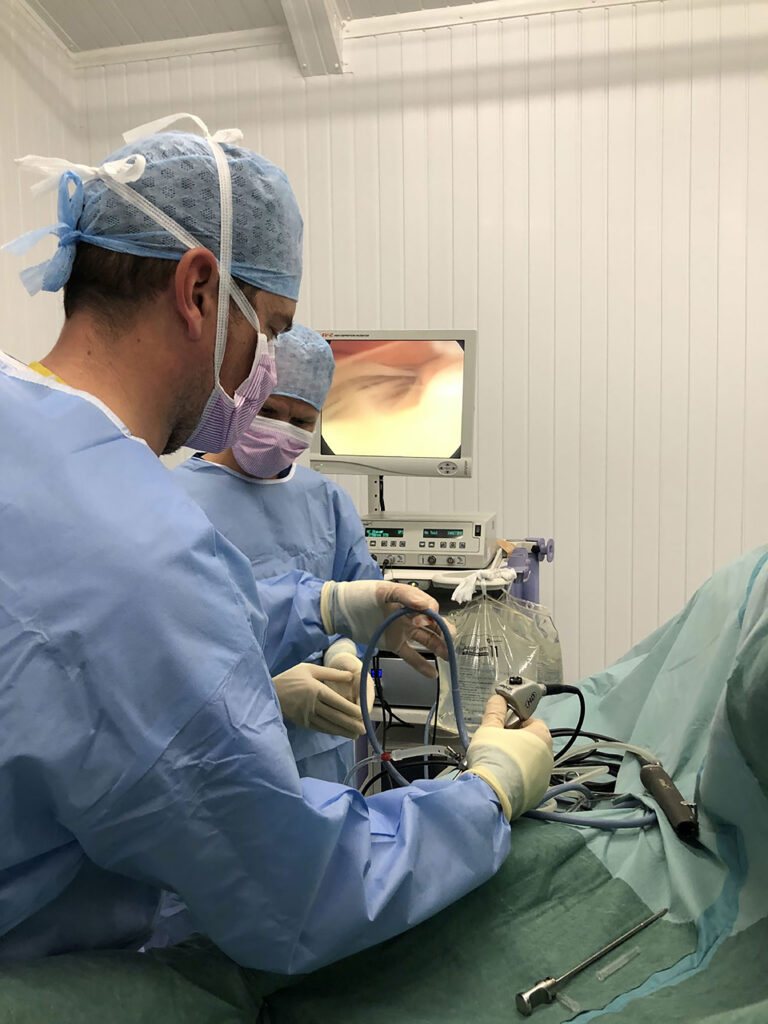

- A general anesthetic is used in some procedures that cannot be carried out standing. The horse is anaesthetized and is therefore unconscious so unaware of pain.
- There are a number of stages in the anesthetic process which we will try and explain in the following text.
- A thorough check-up is carried out to detect anything that could increase the risk of anesthesia. The anesthetic regime may then be modified to suit that horse or, if necessary, the operation postponed until the horse is fit enough to be anaesthetised. In addition, the horse’s temperament can be assessed, as temperament can often be the most important factor affecting how the horse recovers.
PRE-ANESTHETIC
A catheter is inserted into the jugular vein, providing access for fluids and drugs.
The surgery site is clipped and cleaned.
A pre- med sedation is given before the horse is moved to the induction box.
INDUCTION
Once heavily sedated, the anaesthetic is induced using ketamine and diazepam. The horse loses consciousness and lies down. Once unconscious the horse is intubated before being moved to the operating theatre.
MAINTENANCE OF ANESTHESIA
Once the horse is unconscious an endotracheal tube is passed through the mouth via the larynx and down into the windpipe. The tube means that inhalation anaesthetic agents and oxygen are breathed in by the horse which maintains unconsciousness.
An overhead hoist is used to move the horse from the padded box into the theatre — some patients may weigh up to 1,000kg . The horse is then carefully positioned on the padded operating table on its side or back, depending on the surgery to be performed.






CONTACT US
If you have any questions about Lower House Equine Clinic, our facilities or services, please feel free to contact us using any of the details below…
